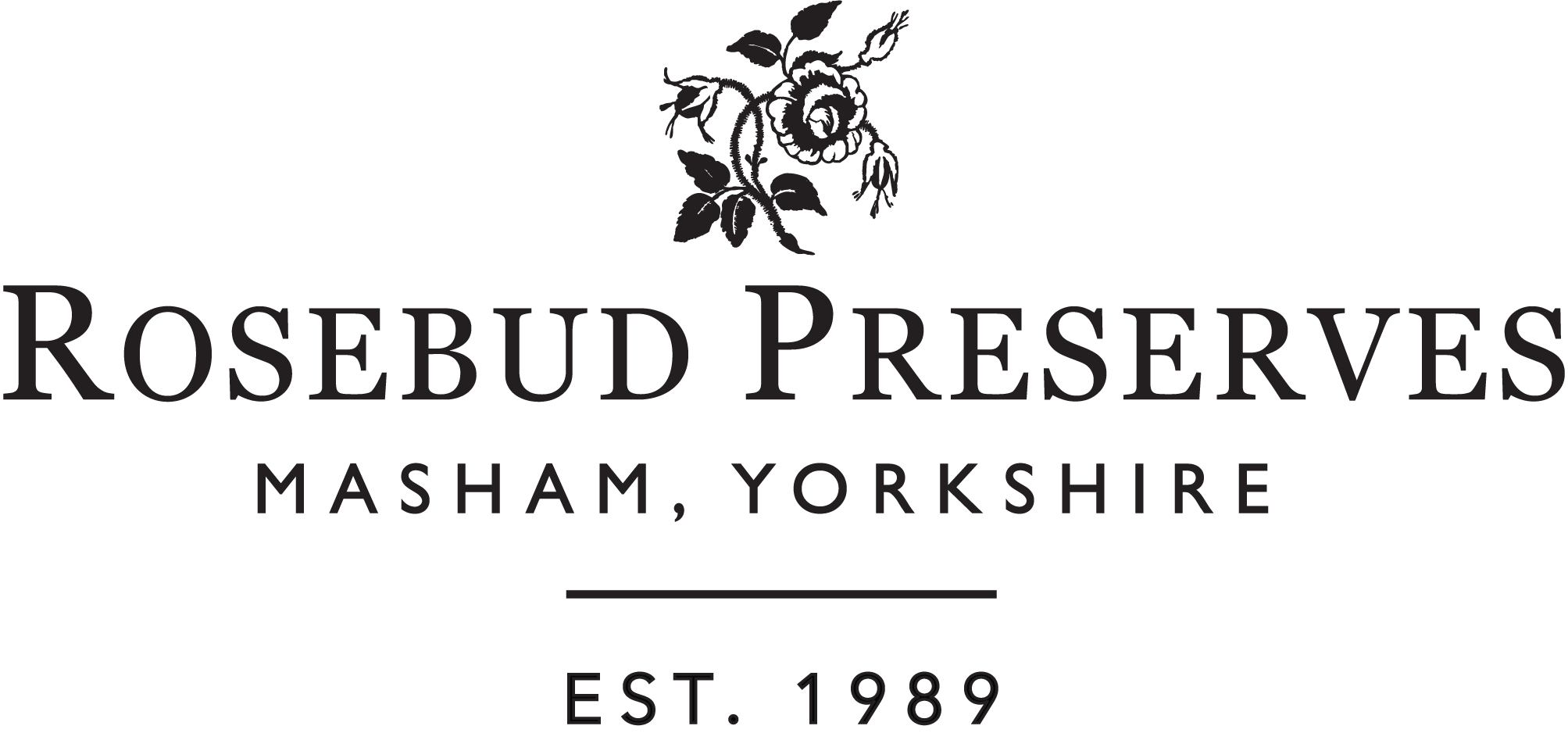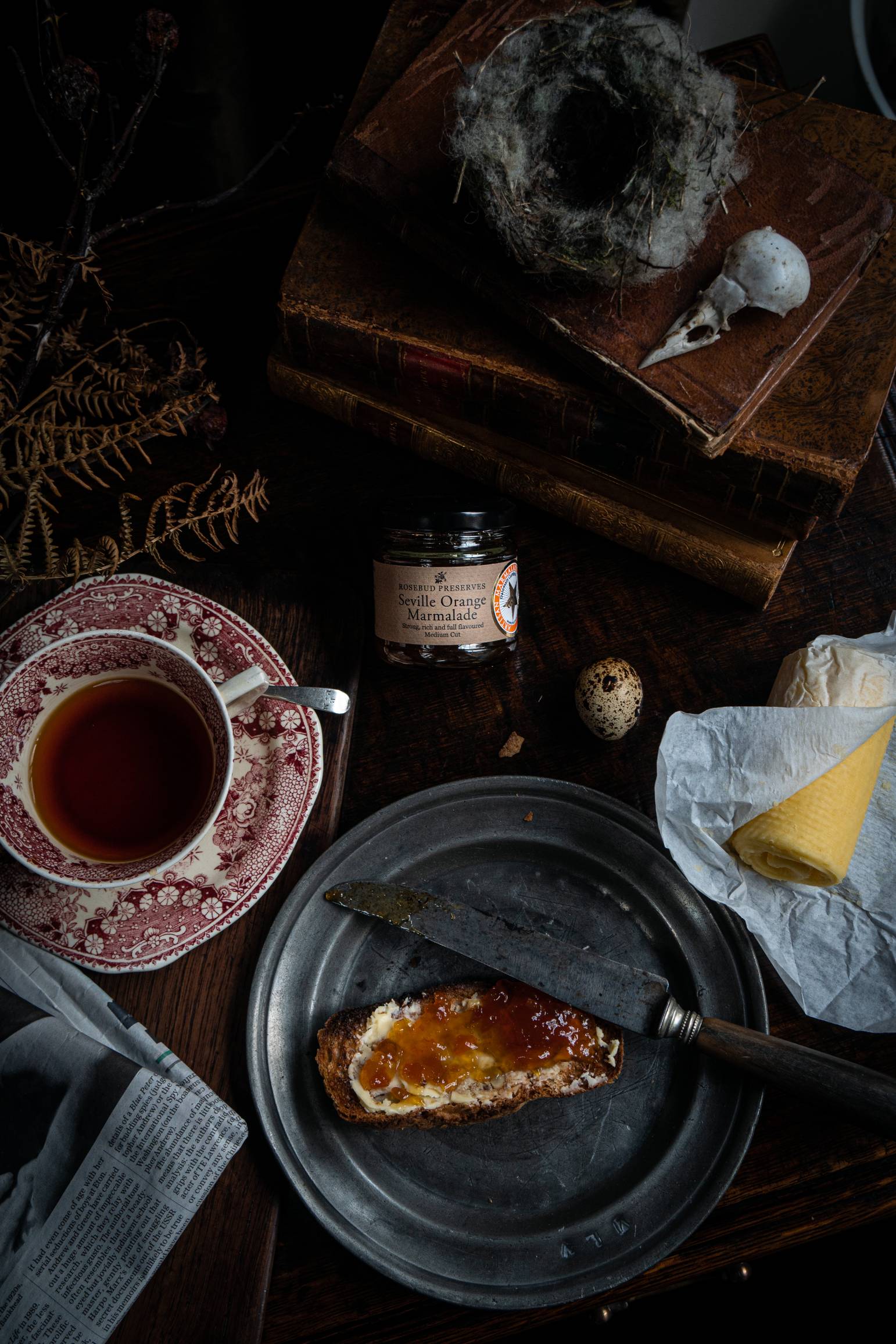How we make our Jam
Written by Elspeth Biltoft
Jam, loved by so many, is the epitome of an old-fashioned treat, a speciality of British cuisine and undisputed partner to scones and cream. How many can say they don't enjoy the indulgence of a cream tea and the eternal argument - jam or cream first.
At Rosebud Preserves we have made jam in its most traditional form since 1989, carefully following the dictionary definition of a 'sweet, soft food made by cooking fruit with sugar to preserve it'. What could be simpler.
Our jams are made from the freshest of produce and created to be deeply fruity. Some such as Strawberry and Raspberry have unrivalled fruit contents. Their ingredient lists are short, incorporating the key elements of jam making - fruit, unrefined golden granulated cane sugar and fresh lemon juice, which we add to Strawberries, Sweet Cherries, and Rhubarb in particular because they contain very little naturally occurring pectin and acid necessary to achieve a successful 'set'.
First we take fresh, dry, just under-ripe fruit and if it has a slightly tough skin such as Gooseberry, Damson, Apricot or Blackcurrant, simmer in a small amount of water until the fruit is tender and the pectin is drawn out. Soft fruits such as Strawberry and Raspberry do not require the addition of water but are gently warmed before the unrefined sugar is added and stirred until every granule is dissolved.
At this point the heat is increased to achieve a fully 'rolling' boil and the surface of the jam is covered with foaming bubbles. After a short time we place a very small amount of jam on a cool saucer and start to test at intervals for the perfect natural set, with the aid of a Refractometer, relying upon the properties of fruit alone. Our jams have varying setting points and some are firmer than others but all depend upon naturally occurring pectin or the addition of lemon juice, or pectin-rich cooking apples if necessary, to achieve their set.
Once cooked the jam must be removed from the pan as quickly as possible to avoid losing its brightly coloured fresh fruitiness. Some such as Strawberry, Damson and Cherry & Amaretto need to stand for ten to fifteen minutes to allow the fruit to distribute evenly in the jar but most must be jarred as soon as possible for the same reasons they are so speedily discharged from the pan.
Jams are not always straightforward to make but time and experimentation has taught us to overcome the key problem experienced by many amateur preserve makers, namely how to achieve a successful set. This is not always easily guaranteed as it depends upon the quality of each years crop of fruit, its pectin and acid content and the diligent skills of the cook.
Some jams benefit from having a proportion of their fruit sliced or mashed before and during cooking, such as Strawberries, Cherries (Cherry & Amaretto) and Greengages in English Plum Jam, to ensure the ingredients meld together to create the right consistency, with clearly identifiable pieces of fruit. Others such as Rhubarb & Ginger and Rhubarb & Orange are best covered with unrefined sugar and lemon juice the day before cooking to enable their juices to run together.
Those containing alcohol such as Cherry & Amaretto, Blackberry & Sloe Gin, Pear & Brandy have their liqueur, gin, brandy or cider added late in cooking to ensure they retain potency of flavour. This principal applies to the wild Elderflower-infused syrup we make to accompany Gooseberry & Elderflower Jam and the aromatic Madagascan Vanilla twinned with succulent Apricot.
Of all the jams we currently make, both classic and innovative, one much loved favourite, made from our chosen variety of fruit, has never fallen from grace. Strawberry has been the preserve of choice for over thirty years of our business. At its best softly sweet and deeply fruity, with vibrant flesh and delicate external seeds, it will always be the jam we turn to when contemplating that wonderful phenomenon, a British cream tea.


